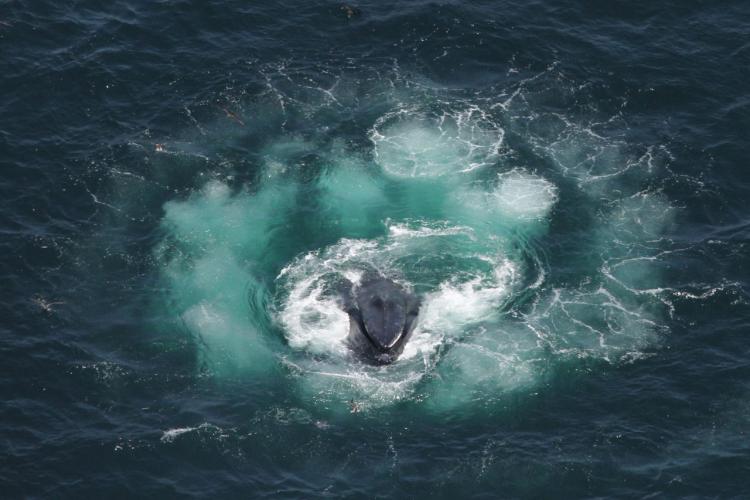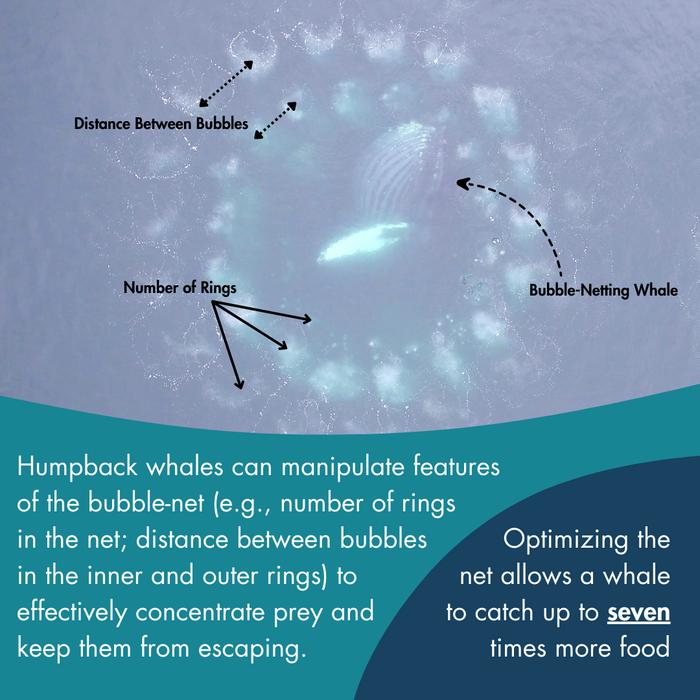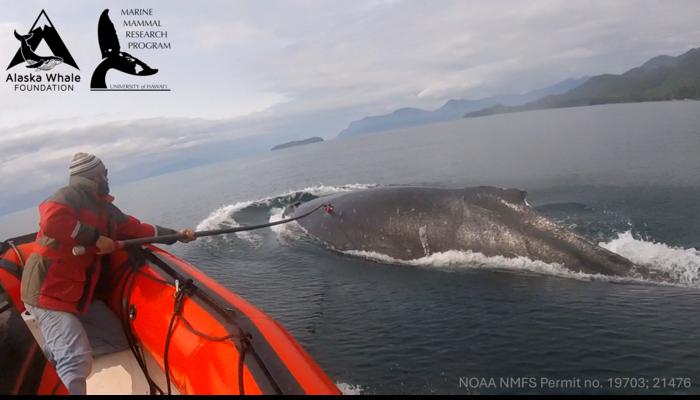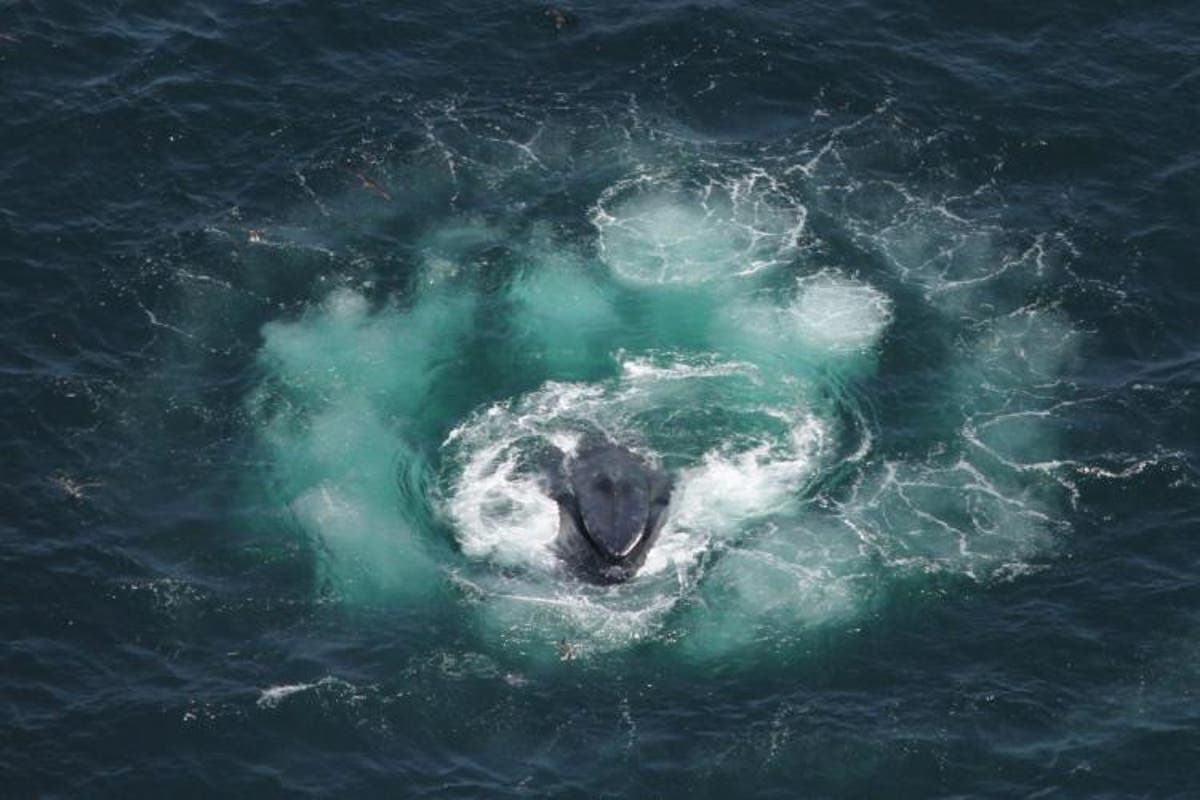Humpback whales have joined an exclusive list of animals that not only use but also manufacture their own tools, a new study conducted off the coast of Alaska has found.
Researchers have known that humpbacks create “bubble nets” to hunt. Now, they have found that the giant marine mammals don’t just use these unique nets but also manipulate them in a variety of ways to maximise their food intake.
“Many animals use tools to help them find food but very few actually create or modify the tools themselves,” said Lars Bejder, an author of the study, published on Tuesday in the journal Royal Society Open Science.
In the study conducted in southeast Alaska, scientists followed and observed solitary humpback whales that blow and craft complex bubbles to catch krill.
The whales have previously been documented to blow bubbles in patterns that form nets with internal rings.
Researchers have now found that the mammals actively control details of the bubble nets like the number of rings, the size and depth of the net, and the spacing between bubbles.

The careful approach, “wholly unique” to humpbacks, lets the behemoths capture up to seven times more prey in a single feeding dive without using extra energy.
“This impressive behaviour places humpback whales among the rare group of animals that both make and use their own tools for hunting,” Dr Bejder said.
Hunting success is key to the survival of the species as the energy budget for the whale’s entire year depends on its ability to capture enough food during summer and fall in these Alaskan waters.
The study offers more insights into how migrating humpbacks consume enough calories to traverse the Pacific Ocean.
When prey numbers dwindle in some of the ocean due to climate change, whales may find it harder to consume enough calories for migration along these routes. This has been linked to a number of whale stranding incidents as the giant beasts wash up dead on coasts.
Whales and fellow cetaceans like dolphins and porpoises have been notoriously hard to study even as they face pressing threats globally from climate change, habitat degradation as well as chemical and noise pollution.
“Whales are a difficult group to study, requiring skill and precision to successfully tag and drone them,” William Gough, another author of the study, said.

Scientists increasingly use drones and special tags to study these majestic marine mammals. “We deployed non-invasive suction-cup tags on whales and flew drones over solitary bubble-netting humpback whales in southeast Alaska, collecting data on their underwater movements,” Dr Gough said.
Nearly a quarter of the 92 known cetacean species face extinction risk and effective conservation strategies are urgently needed to save them.

Since hunting is key to their survival, researchers hope to better understand this behaviour and help monitor and conserve the feeding grounds.
They are also studying more feeding behaviours of the humpbacks such as cooperative bubble-netting, surface feeding, and deep lunge feeding.
“What I find exciting is that humpbacks have come up with complex tools allowing them to exploit prey aggregations that otherwise would be unavailable to them,” Andy Szabo, a co-author of the study, said.
“It is this behavioural flexibility and ingenuity that I hope will serve these whales well as our oceans continue to change.”

